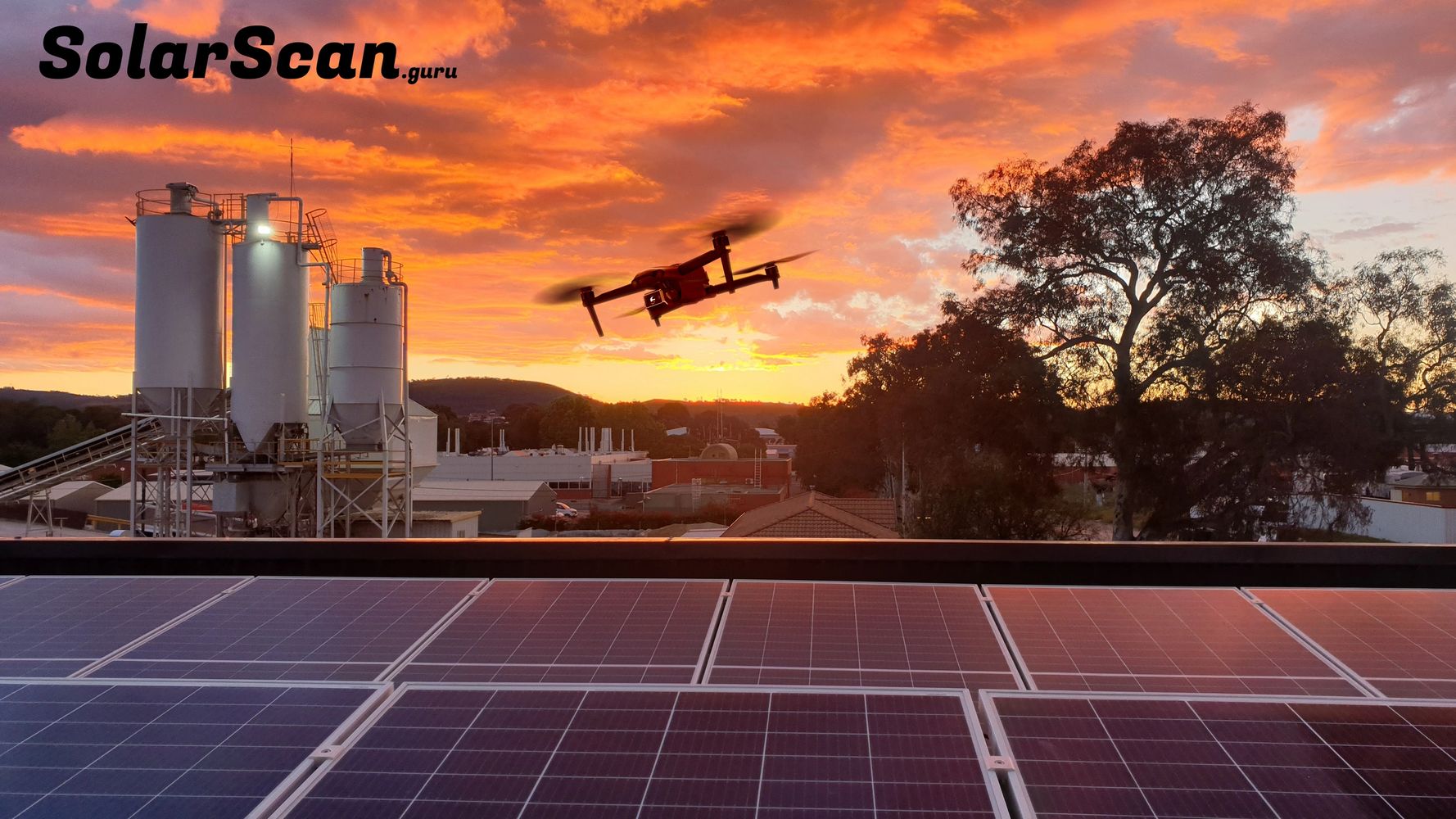

Ultraviolet Fluorescence Testing (UV-F)
Why?
Are you considering buying or selling a house with Solar Panels?
Do you have an insurance claim for storm damage?
Do you have an issue with your Solar Panel Product Warranty?
Perhaps SolarScan.guru can help with our UV-F scan.
Non-Invasive
UV-F is a non-destructive characterization technique for detecting and visualizing hail induced PV-cell damage. However, since this technique requires complete darkness and is typically performed at night or under a light obscuring hood it normally disallows UV-F imaging in the field by overflying with a drone. Fortunately this is no longer the case. With our propriety digital signal processing software and AI capability we are able to perform a non-invasive UV-F scan from a drone in low light conditions.
Drone based UV Fluorescence Imaging of Hail Damaged / Defective PV modules
Photovoltaic (PV) modules can be damaged to varying degrees in a hailstorm from no damage, to the protective glass front panel shattering. Somewhere in between the two extremes is a region of occult damage which can result in the gradual deterioration in efficiency and service life of the affected modules.
The UV-F method detects the luminophores, which are generated when the encapsulation material Ethylene Vinyl Acetate (EVA) is activated by 12 months exposure to normal sunlight. When these luminophores react with oxygen, they lose their fluorescence and it is the absence of fluorescence that is used to detect oxygen leakage points associated with cracked cells.
One of many techniques
Photovoltaic (PV) technology is an attractive renewable energy source and its widespread use will be a key factor in reducing greenhouse gas emissions. The PV market requires an easy field assessment methodology of the performance and reliability of PV systems as the new business models involve decentralized energy production with the responsibility for maintaining the PV sources spread across many private owners. With distributed ownership and currently no commercially available method for recycling solar panels at end-of-life there is an imperative to develop non-destructive characterization techniques for the detection of PV-module failures following extreme weather events so that undamaged modules can remain in service.
The standard screening methods include;
- Visual inspection (VIS),
- Thermography (TG),
- Low cost Thermography (TGLC),
- Dark Lock-In (DLIT)
- Illuminated Lock-In (ILIT) Thermography,
- Electroluminescence (EL),
- Daylight Luminescence (DaySy),
- Multimeter Measurement (MM),
- Current-Voltage (IV)-Characteristics,
- Dark (IV)-Characteristics (D-IV)) and;
- UV-Fluorescence (UV-F).
Each of these methods have different applicability and boundary conditions for the detection of the different PV module failure modes. Of these, UV-F is less common but can be used non-invasively to detect defects similar to those detected with EL techniques. UV-F also has an added benefit of identifying contemporaneous damage which is not possible with EL testing.
The Scanning Process
Watch the scanning principle in action

Cracked Cells
Cracked during installation
Frequently Asked Questions
Please reach us at guru@solarscan.guru if you cannot find an answer to your question.
A panel warranty typically have two parts—a construction/materials warranty and a power output warranty.
The first covers the actual manufacturing quality of the panel and warrants the panels to be free of manufacturing and materials defects for a given time, usually 10 years or so, but some manufacturers provide manufacturing warranties up to 25 years or more.
The second covers the panel power output, and is given in the form of a percentage after a certain number of years. For example, a power output warranty might state that a panel will still produce 90% of its rated output after 10 years and 80% after 25 years. Or it might be stated as a linear warranty with just one figure, say 85% after 25 years.
Under Australian consumer law importers are responsible for manufacturers’ warranties, so it’s important to know who your importer is because sending the panels back to the country of manufacture would be impractical.
ref: https://www.solar.vic.gov.au/solar-panel-pv/section-8-what-warranties-are-available
The Installation Warranty covers the installation or workmanship warranty. This is the part of the warranty that is the responsibility of the system installer and covers their workmanship as opposed to the panels or inverters within the system. The Silicon layer is brittle and can be easily damaged during storage, freighting, installalation or by wind loading if incorectly installed.
No. Not at all. Unlike some of the other methods UV-F is a non-invasive, non-destructive characterization technique.
No. There is no need to disconnect or turn off your panels for this test.
The scan report is produced automatically from the drone video sequences after enhancing with some clever digitial signal process and characterised by our proprietry AI software. It is then reviewed by a human prior to publishing on a secure internet link as a printable web page for you to view or share. This may take a day or two.
What do I need to do?
... other than booking the job - make the drone pilot a nice cup of tea at the end of the flight.
This website uses cookies.
We use cookies to analyze website traffic and optimize your website experience. By accepting our use of cookies, your data will be aggregated with all other user data.